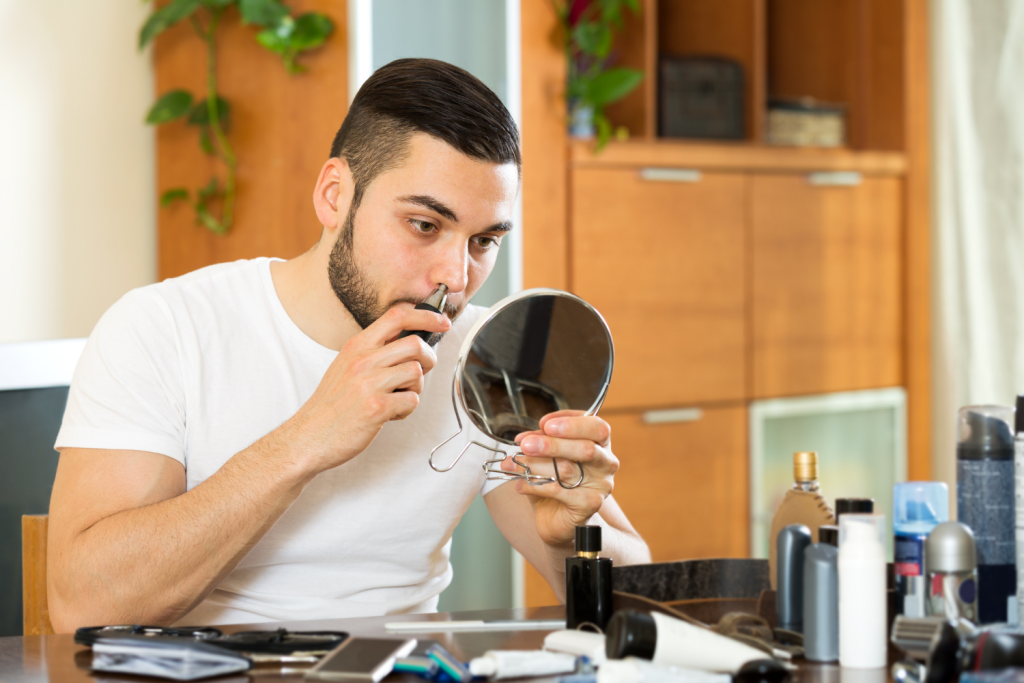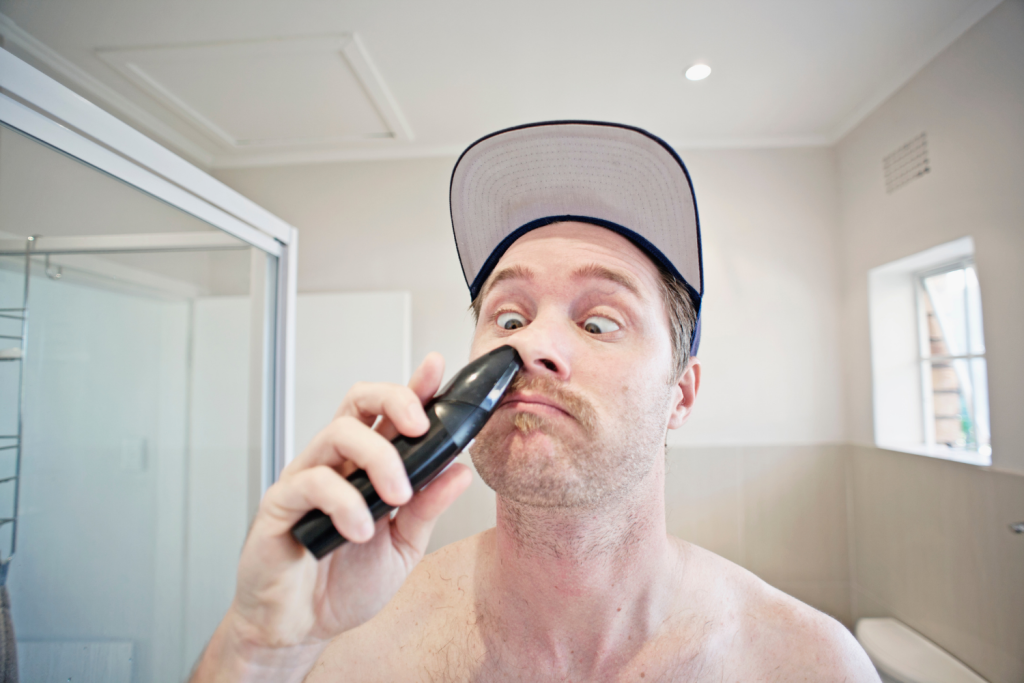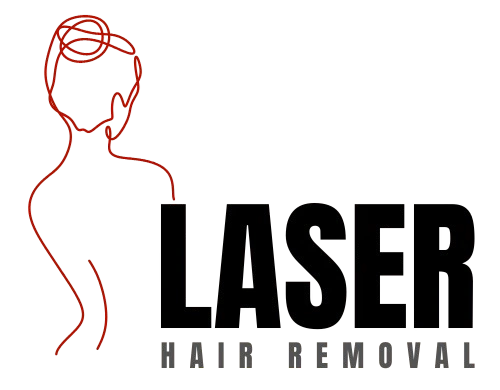The human nose hair is a natural defensive mechanism that serves as a barrier. Nasal hair prevents foreign particles from entering the body system and keeps moisture in the air we breathe.
The nose and face have especially thick blood vessels. They support hair development in the nose.
If you’re not a fan of having nose hair, you might choose to get rid of it for personal or cultural reasons. The methods for removing nose hair and the associated risks are listed below.
1. Nose Trimmers

For most individuals, the easiest and most accessible option is to remove nose hair with tiny scissors. Grooming kits frequently include tiny scissors designed specifically for this purpose. These scissors should have rounded tips to avoid wounding yourself by poking your skin and bleeding.
Trimming nose hair can help you remove or reduce only the most apparent nose hairs without harming the sensitive skin within your nasal cavity.
Trimming your nose hair merely lasts until the hair grows long again. It’s not a permanent solution, but it’s the most comfortable.
2. Waxing or Plucking
Waxing or plucking nasal hair is not advised in most situations. Pulling out individual hairs can lead to ingrown hairs and infection. Waxing, particularly, might cause serious damage to your skin on the interior of your nose. However, there is a nasal wax product on the market that targets only the hair within the nostril’s border. Results may last up to four weeks.
Waxing lasts longer than trimming since it doesn’t just remove the hair shorter. It removes the whole hair shaft from below the skin line instead of merely cutting it shorter.
If you remove nasal hair using wax at home, double-check and follow the directions carefully. If the region is painful or tender after waxing, moisten a towel with warm water and apply it to the area. This hot compress might help relieve pain and speed up the healing process.
3. Laser Hair Removal
Lasers are used to remove hair from various parts of the body, both natural and surgically created. The use of lasers to destroy nasal hair is controversial because it might irritate the mucous membranes in the nasal cavity.
Because the laser treatment for nose hair is focused exclusively on the most apparent hair surrounding the inside edge of each nostril, it’s possible that it simply affects this region. Nose hair becomes less obvious and keeps hanging out of one’s nose after undergoing this therapy.
Although laser hair removal is the most costly treatment, some practices and physicians may offer repayment programs to cover the expense over time.
If you want to get laser hair removal, select a board-certified dermatologist or plastic surgeon. Only go for laser hair treatment at a professional clinic. Because the nose is such a tiny bodily cavity, treating it with lasers is difficult.
Find a doctor with a lot of expertise and have a consultation before starting any therapies.
Methods To Avoid

In the nasal cavity, depilatory or hair removal cream is not advised. Depilatories are powerful chemicals that can inflame and burn the mucous membranes in your nose if inhaled.
However, there may be natural products that can thin out nasal hair; nevertheless, read the product instructions carefully. The majority of depilatory cream labels warn against using it on nose hair.
Is it safe to remove nose hair?
Trimming, thinning, and removing nasal hair are all safe when done correctly, but you don’t want to go overboard. Because nose hair plays an essential role in your body, it should not tamper with too much.
The presence of a beard protects you from airborne particles, which is why many people with allergies or infections prefer it. Nose hair also aids in the retention of moisture in the air that you breathe. These advantages are especially significant for those who suffer from allergies or asthma.
The following are some of the potential problems that may arise from removing nose hair:
- ingrown hairs
- pain
- irritates the nasal mucous membranes
- Increased debris penetration into your airways
Conclusion
Everyone’s nose hair is a natural and essential component of their appearance. There are secure methods to reduce nose hair if you don’t want it to be obvious. The safest technique to trim nose hair is with specialized scissors.
There are alternative strategies that you can try, but they may not be as safe as using scissors or electric trimmers.
The most effective solution for removing nose hair at home or with medical treatment is provided by a skilled barber, dermatologist, or plastic surgeon.
